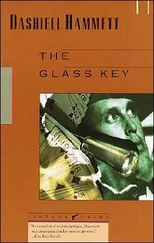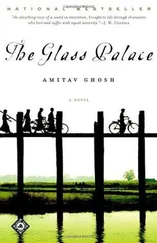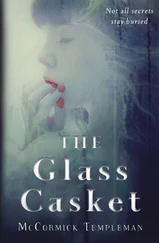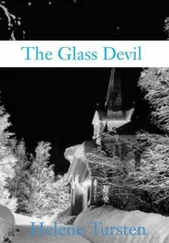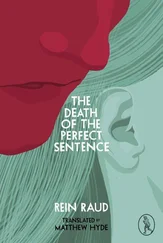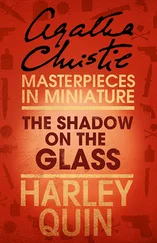“For this one I’d recommend something more precise,” Shadrack said, rising from the table. He went to the bureau where he’d retrieved the pebbles and returned holding a long quill. “Should be sharp enough. The maps that contain more detail can sometimes be difficult to see with your fingertip. Try catching a smaller surface with the tip of the quill.”
“Can I go back to the common?” she asked hesitantly.
“By all means—try it.”
She placed the quill on one corner of Boston Common and at once recalled standing at the intersection of Charles Street and Beacon Street, between the common and the Public Garden. The landscape around her looked blurry, but the brick houses along Beacon Street stood out sharply. There were fewer buildings in the city center. She had a clear memory of looking up the road and seeing the Park Street Church and then the State House at the top of the hill. She drew the quill along Beacon Street, heading west. The roads unfurled before her, and buildings sprang up as if emerging from a mist. She passed the mansions in the city center, the high churches, and smaller brick row houses, all the way to the small farms at Boston’s outskirts. She had a sudden, vivid memory of standing before a red tavern with a low, wooden door. Sophia drew back the quill. “It’s beautiful. Just beautiful. I can’t believe you made this!”
“Can you find East Ending Street?”
Sophia moved the quill tentatively, hovering over the South End. “There it is!” she suddenly exclaimed. “That’s East Ending Street!” She placed the quill on the map. In the memory that flooded her mind, some of the houses she knew were missing and some were unrecognizable, with newly laid bricks and oddly colored doors. But then something stirred in her mind, and she realized she was looking directly at a familiar house—her house. It was almost unchanged—sturdy and dignified, with its white-shuttered windows, its ponderous owl, and its bright red door. Only Shadrack’s oval sign and the creeping ivy along the brick walls were missing. “It’s our house!” she exclaimed.
Shadrack chuckled.
Sophia lingered over the memory a moment longer and then touched different areas of the map, locating her school and her favorite place by the river. After several minutes of eager exploring, she put the quill down. “So if the cloth map is the weather,” she said slowly, “and the clay map is the ground, and the metal map is the buildings—”
“Construction,” Shadrack clarified. “That includes roads, railways, bridges, and so on. Everything manmade.”
“Everything manmade,” Sophia repeated. “That’s all there is. What does the glass map show?”
Shadrack raised his eyebrows. “You tell me. What is missing from the memories?”
Sophia stared blankly at the sheet of glass. She picked it up and examined it closely, but all she could see was her cloudy reflection. Suddenly something occurred to her, but the thought was so marvelous that she couldn’t quite believe it. “Not . . . people? ”
“Try it and see.”
“But I have no ideas about how to wake it up.”
“You’re right—this one is the toughest. And it’s a little difficult to come up with, in this particular room.” He stood. “Normally, you would have a window with daylight, and you would keep the glass covered. Bring it over to the table lamp.”
“Oh—light!” Sophia exclaimed. She carried the glass sheet carefully to where her uncle was standing beside the two armchairs. She held the pane under the bright lamp, and immediately the spidery white lines of a finely etched map spread across the surface of the glass like fragile threads of frost on a winter windowpane.
Shadrack took it from her and held it up. “The glass map recalls human action—human history. It can be disturbing the first time you see one. It is strange to remember people you don’t know, saying things you’ve never heard. You must keep a clear distinction in your mind between the memories that are yours and the memories that come from the map. But you’ll learn to do that with time. This map I know for sure has nothing too alarming in it. You can savor all of its memories without concern.” He carried the glass back to the main table and gently placed it face up. Then he slid pebbles onto both of the 10s on the two clocks at the left-hand side of the map. “Try the quill,” he said encouragingly.
Sophia wrinkled her brow. She felt strangely reluctant to plunge into the memories that she knew were stored before her.
“Go ahead,” Shadrack said. “How about here, near the market?”
She held the quill over Quincy Market and set it down. She felt a sudden rush and a powerful wave of recollection. People were talking all around her, laughing and shouting and gossiping in low voices. A woman standing next to her carefully counted her money. A boy walked past with a crate full of flowers, and she had a sudden memory of their powerful, hothouse smell. She could remember seeing the clouds of warm breath in the cold air and the sleepy face of a potato farmer who had driven his cart into the city from far away. It all seemed incredibly vivid—as if she had lived through it herself. The space around them remained blurry. It was as though she had erased all the buildings and streets and the very ground beneath her feet. Beyond the people, her memory was dim.
Sophia lifted the quill and blinked a few times. “It’s odd. As though I can remember people, but nothing else. It feels like I could be anywhere.”
“I know—it’s strange to see ourselves without the world around us, isn’t it?” Shadrack gently moved the glass pane aside. “I’ll show you what makes it better—what makes them all worthwhile, really.” He picked up the cloth, gently blew against, it and placed it face up on the table. With the tip of his finger he drew water onto the clay tablet and placed it on top of the cloth, their corners perfectly aligned. Then he added the metal sheet, with its map still intact. And finally he set the glass pane, with its pebbles on the 10s, on the top of the pile. “Have a go,” he said.
Sophia took the quill and hesitantly stared down through the glass. She could see the silver traces of the metal map lying beneath it. Then she took a deep breath and placed the quill at the corner of Beacon and Charles.
All of it—a whole world from February of 1831—came back to her clearly. In Boston Common people were hurrying down the walkways, stamping their feet against the cold. The bare trees nodded gently in the chilly breeze, rattling a little against the gray sky. A small group of skaters whirled over the frozen pond. Along the streets people rushed with their baskets full of purchases or rode past on their Goodyears, the rubber wheels spinning soundlessly. And in all the windows of the houses people moved through their endless routines of eating and talking and working and sleeping.
It was like plunging into another world, but the world was her own. She knew the memories did not belong to her, and yet they were there—so vivid, so lucid that they seemed to be entirely hers. Sophia lifted the quill with a sigh. “My memories are never that clear,” she said. “They are always so patchy. But these are so perfect.”
“We are all like that,” Shadrack agreed. “That’s why it helps to make the maps in layers. We cannot all remember everything at once. In fact, it’s surprising how little detail people actually remember. But if you add together what everyone remembers about each piece, it comes together.”
Sophia said what had been on her mind since she had first discovered the purpose of the glass map. “Do you think—is there any way . . . Could it be that Mother and Father might have left memories this way, stored in a map somewhere?”
Читать дальше

